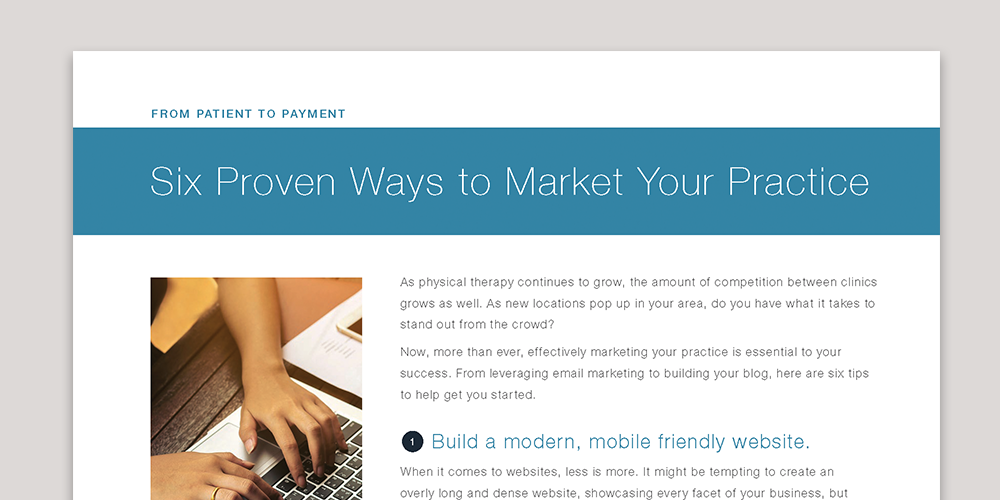In marketing, we use the term touchpoint to describe any place or resource where you as a company contact your customer. Touchpoints might include a physical object like a branded pen or stress ball, or bigger advertisements like a billboard on a major highway.
The most critical touchpoint, however, is your website. More than anything else, your site is the trusted source of information about your practice. When are you open? What do you do? How can I get in touch? Your site should make it easy for people to find critical information about you.
While most business websites function as modern brochures, we see your website as a tool in a playbook that goes further than mere marketing. It’s also the best way to educate your patients, build trust and reinforce your brand (learn more about building your brand here).
How to Develop Content
With a good website and consistent blogging, you can show your expertise both in and out of the clinic. While the content won’t write itself, it’s not as hard to generate as you may think. It all comes down to documenting the things that your patients already ask about.
We’ll touch on specific ways to develop content for your blog, how to distribute it both on the web and through an app, and how to use your platform as a way to influence patient behavior.
To check your progress and figure out where you should start, ask yourself a couple of questions:
- Do you already have a website?
- Are you already blogging?
- Do you regularly publish new and valuable content?
If you’ve already got every one of these bases covered, then use this content as a refresher. If not, use this as your guide to getting started.
Blogging
Written content on the web is bountiful—there is a myriad of sources and bloggers. Recently, the term content marketing has become wildly popular. The strategy is this: If your company posts valuable content on the web that people are searching for, they will click on your website and learn about your service. Understand what the most common questions are in your clinic (what exercise should I do for X injury, how can I avoid further injury, what are the best stretching exercises for X, etc.) and write blogs that dive into the answers.
Patient education
In healthcare, we have a unique opportunity to utilize the web as a patient education platform. There is undoubtedly a plethora of health-related content on the internet, but credible information from a trusted source is always welcome.
Think about the most common patient concerns and the questions you find yourself answering over and over again. What if you could point your patients to your blog where you’ve provided the information they need in a well-written post with links to relevant content?
As you build up a library of answers to common questions your customers have, this will also help your SEO (Search Engine Optimization). Now, someone from anywhere in the world can search for an answer to the question you answered, find your site, and soon become a client (or at least an advocate).
With Keet, you can automatically ask clients to leave social reviews after their visit. Combined with patient education, this helps your practice stay at the top of the web and top of mind with patients.
Practical tips for getting started
While starting or redoing your website might sound daunting, if you know where to start and focus your efforts, it will be well worth your time and can pay back big dividends. Here are eight high impact tips to getting started.
- Outline the content you want on your website. We recommend starting with these four main pages: homepage, contact us, about us, and a blog section.
- Make sure you build a modern, mobile-friendly website.
- Add valuable images like team photos, examples of your work and skills, and photos of your clinic. Try to stay away from overwhelming (and cheap) stock photography.
- Establish a strategy for the type of content you want to put on your website.
- Assign someone the task of making sure your practice’s information stays up to date on your website.
- Ensure you have a strong call-to-action across your website.
- Keep your brand identity consistent across the web (use your logo, font, and colors on your site, social media, etc.)
- To keep your content helpful for patients, avoid using too much jargon and put things in simple terms.
- Include customer testimonials to build your credibility (with permission, of course).
Do you have any tips for getting started with a website? Share them in the comments below!




Comments